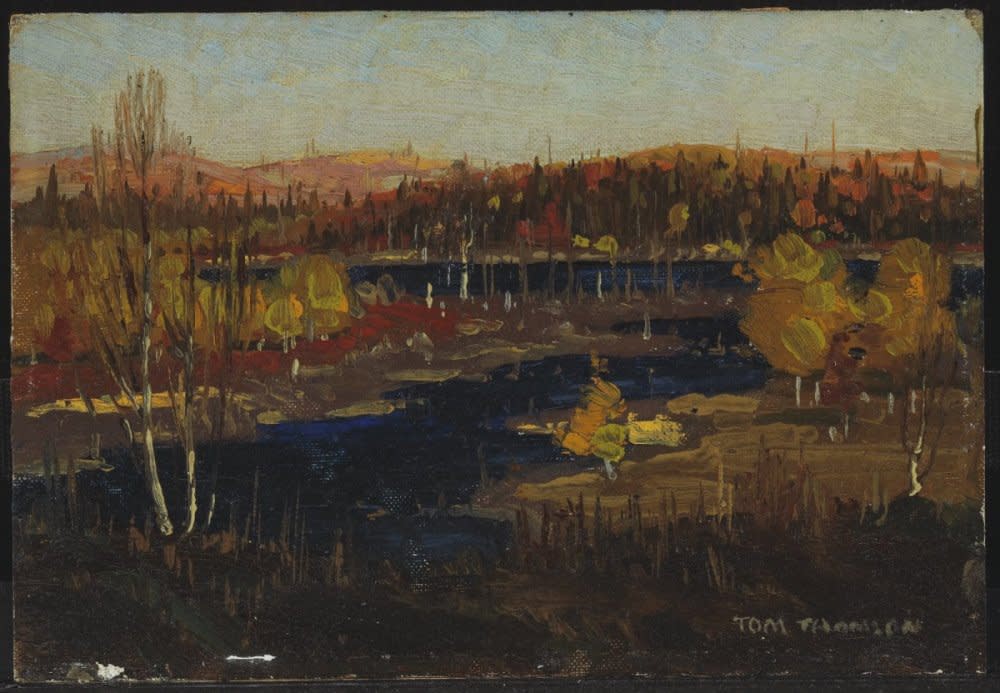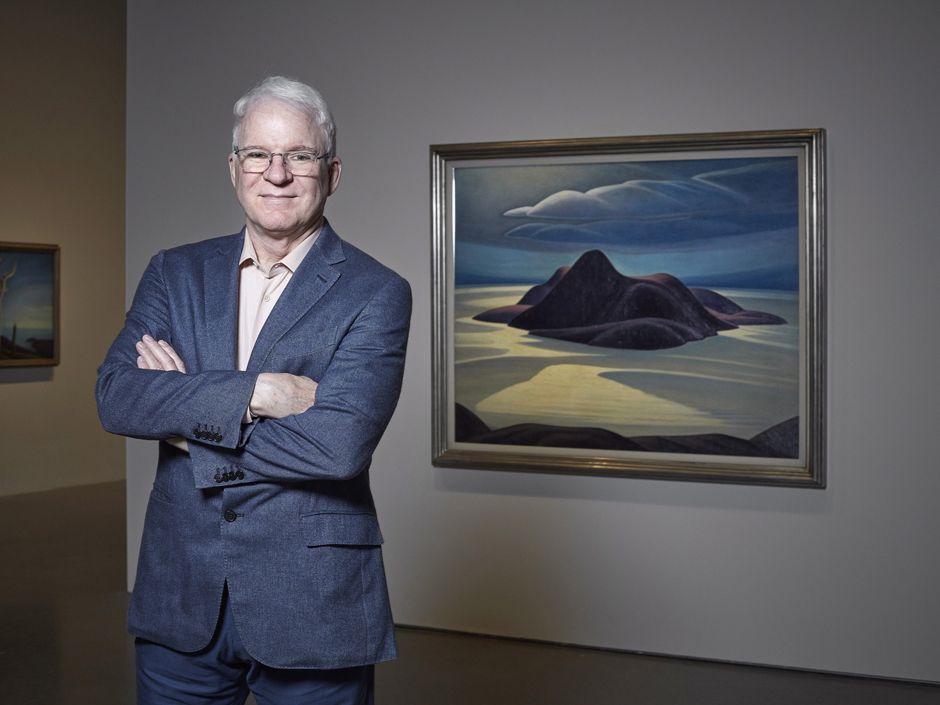In the Art world, there are some artists who rise to prominence, while others who endure their entire career in completely obscurity. In Canadian Art, the Group of Seven, for instance, command significant attention for their work; their pieces selling for extraordinary prices in the art market. But what is it that distinguishes these artists, and others like them, as invaluable and influential? From supply and demand dynamics, to the significance of their works and the provenance of their art, there are several factors that can impact an artist's value and make them seen as important. At Rookleys Canadian Art, we are focused on historically significant and investment-grade work. By exploring the various facets that impact an artist's legacy, we are able to ensure the art that we offer in our collection will have an enduring impact in the Canadian Art industry and will be a lasting investment to our clients.
Supply and Demand
As with any market, supply and demand play a crucial role in determining the popularity and price of artworks and artists. While some artists were profoundly prolific, creating hundreds or even thousands of pieces over their lifetime, others created very few works. Canadian artist, Paul Peel, is an example of an artist who tragically passed away at the young age of 31. Having been one of the first Canadian artists to gain international reputation over his lifetime, winning an award in the Paris Salon in 1890, this sudden passing raised the value of the few pieces of art he created. Owning a rare Paul Peel painting is seen as exceptionally special and makes him an important artist in Canadian history.

There is also a notable correlation between the prices of paintings by living artists and those who have passed away. The saying "artists are only famous after they're dead" often rings true, as many artists experience a surge in recognition and popularity after they have passed. Emily Carr's fame exemplifies this shift: initially overlooked during her lifetime, Carr's work gained immense popularity after her death, solidifying her as a central figure in Canadian art. Consequently, her paintings now command significantly higher prices at auctions and galleries.

Narrative and Influencial Work
The power of an artist's story can elevate them above their peers. As humans we gravitate towards personal narratives, and the world of art is no exception. When an artist has a compelling tale of challenge, perseverance, or even joy, it resonates deeply with us. These narratives transform the artist from a mere name on a canvas into a relatable human figure. Maud Lewis, is a brilliant example of this. Her paintings may not initially appeal to everyone, but learning about her life story and her struggle with juvenile rheumatoid arthritis often sparks heartfelt appreciation for her work. In 2016, when the movie Maudie was released, starring Sally Hawkins and Ethan Hawke, Maud Lewis' notoriety was cemented in the history books. Artists whose stories humanize them really resonate with audiences and as a result, their work often sees an increase in value and demand.

Moreover, an artist's legacy can be significantly shaped by a pivotal artwork that marks a turning point in their career. These seminal pieces not only showcase the artist's skill and innovation but also resonate with collectors and art enthusiasts alike. Such artworks often become iconic representations of the artist's style and vision, cementing their place in art history and driving up their market value.
Quality of Work
The quality of an artist's work is one of the crucial factors in determining their importance and value. If there is an artist who has used proper, high quality materials to create their paintings, most of the time their paintings stand the test of time, and as a result are highly sought after. There are also many artists who are very important; however, they may have used improper paints and materials to create their art. As a result, their paintings are rapidly deteriorating, causing them to lose value over time due to collectors not wanting to take a risk on collecting an art piece that is slowly vanishing away.

TOM THOMSON - AUTUMN EVENING, BURNT LAND c1912 - National Gallery

Provenance
The provenance of an artwork can greatly impact an artist's reach and significance. Provenance refers to the history of ownership of a piece, and it plays a crucial role in determining an artwork's importance. Whether the piece has been displayed at prestigious institutions like the Art Gallery of Ontario (AGO) or the National Gallery of Canada, or has been owned by a famous star, having these large establishments and notable names associated with an artist or their work greatly enhances the artist's importance.
A notable example of this is when Steve Martin endorsed Lawren Harris's artworks. Harris's popularity soared to an all-time high, and his artworks reached peak value during this period, solidifying his importance in the art world. The notable ownership history of paintings significantly influences the market perception of the artist and their work.

Prestige
Having representation by a gallery, especially world-recognized galleries such as the National Gallery of Canada (NGC), serves as a significant indicator of an artist’s importance and market presence. This representation acts as a stamp of approval, signaling that the artist is among the best in their field. Without representation at the NGC, an artist may not achieve the same level of prestige as those who have earned their place there. The NGC evaluates artists based on various criteria, ensuring that the artworks represent the finest work by either major contemporary artists or those with historical significance.
As stated in the NGC Acquisitions Policy, “The aesthetic quality of a work of art should be of the highest possible nature in relation to its position within the artist’s oeuvre, within its artistic or historical period, and finally within its particular cultural tradition. Works of art may also be recommended for their exceptional historical importance”. Furthermore, the NGC notes, “In exceptional cases of consistent excellence and innovation over time, some artists will be collected in depth”, implying that artists with a track record of exceptional work may be represented extensively by the gallery.
Another factor that elevates an artist's importance and value is their involvement in exhibitions, receipt of awards or honors, and critical acclaim. These elements collectively enhance an artist's reputation and significance in the art world. Exhibitions, especially those held at prestigious institutions, offer artists a platform to reach wider audiences and gain recognition from both critics and the public. Awards and honors, such as national or international art prizes, not only acknowledge an artist’s skill and contribution but also boost their credibility and desirability in the market.
Critical acclaim, through reviews and endorsements from respected art critics and scholars, further solidifies an artist’s standing. Such recognition can lead to increased demand for their works, higher market values, and more opportunities for future exhibitions and accolades. Together, these factors contribute to building a robust and enduring legacy for the artist, ensuring their continued relevance and importance in the art world.

Conclusion
In examining what defines an artist's importance in Canadian art, we've explored how factors like supply and demand, pivotal works, quality, provenance, relationships, and institutional prestige contribute to their legacy and market value. Understanding these dynamics is crucial for appreciating and supporting artists. By valuing their stories, craftsmanship, and recognition from institutions, we not only enrich our own art experiences but also uphold the varied perspectives that shape our cultural heritage.